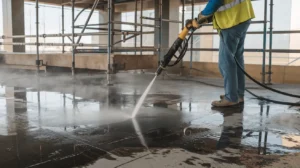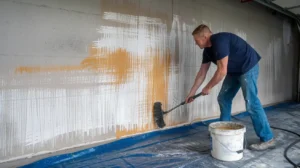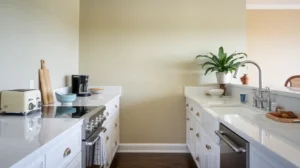How to Clean Concrete Floor | A Step-by-Step Guide for...
Read MoreThe Definitive Guide to How are Granite Countertops Attached
How are Granite Countertops Attached a popular choice for many homeowners due to their durability, aesthetic appeal, and ability to add value to a kitchen or bathroom? In this overview, we’ll delve into the characteristics of granite countertops and why proper attachment is crucial for their installation and longevity.
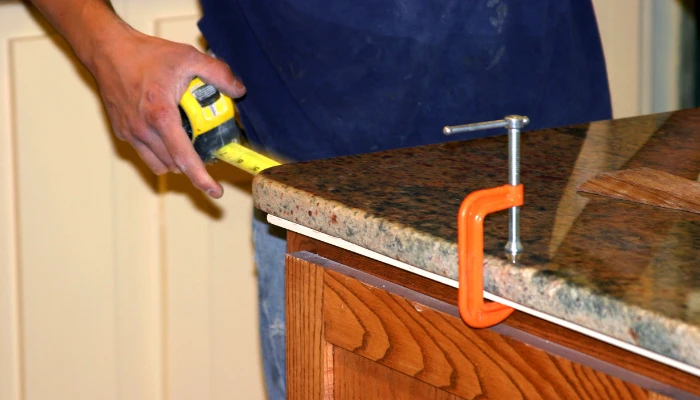
Methods of How are Granite Countertops Attached
Adhesive Bonding:
Types of adhesives used: Adhesives can vary widely in composition and properties, including epoxy, cyanoacrylate (super glue), polyurethane, and silicone. Each type has specific characteristics suited for different materials and applications.
Application process: Adhesive bonding involves applying the adhesive to the surfaces being joined, ensuring proper surface preparation for adhesion, and then allowing the adhesive to cure or set according to the manufacturer’s instructions. This often involves clamping or holding the parts together until the adhesive sets.
Mechanical Fastening:
Types of fasteners: Mechanical fasteners include screws, bolts, nuts, rivets, nails, and staples, among others. These fasteners come in various sizes, materials, and designs to accommodate different load requirements and environmental conditions.
Installation techniques: Installation of mechanical fasteners typically involves drilling holes, aligning the parts to be joined, inserting the fastener through the holes, and securing it in place using tools such as wrenches, screwdrivers, or rivet guns. Proper torque or tension is applied to ensure the fastener holds the components together securely. Stone Sealer Restoration provides the best service related to how are granite countertops attached.
Combination of Adhesive and Fasteners:
Combining adhesive bonding with mechanical fastening can provide enhanced strength and reliability in some applications. This approach involves applying adhesive to the surfaces as well as using mechanical fasteners to provide additional reinforcement. The adhesive helps distribute loads and seal gaps, while the fasteners provide immediate holding strength.
Securing Granite Countertops
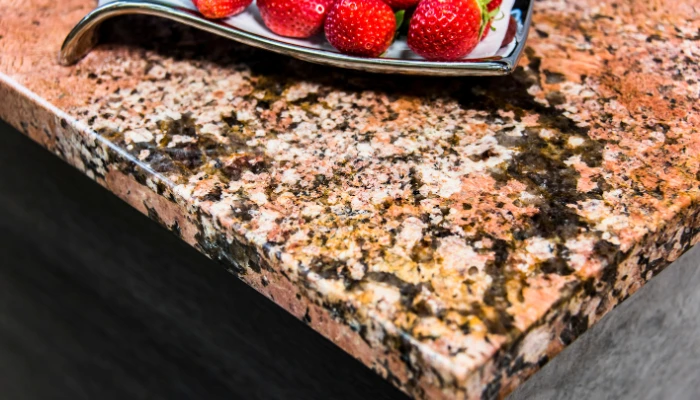
Cleaning and Levelling the Surface:
- Thoroughly clean the surface to remove any dust, dirt, or debris.
- Use a levelling compound if the surface is uneven to ensure a flat base for the countertop.
Ensuring Proper Support:
- Identify and reinforce any weak areas in the cabinetry or support structure.
- Use shims or additional support brackets as needed to provide adequate support for the weight of the granite.
Proper Amount and Distribution:
- Use a high-quality adhesive recommended for our granite services countertops.
- Apply the adhesive evenly across the entire surface of the countertop to ensure strong adhesion.
Curing Time and Temperature:
- Follow the manufacturer’s instructions regarding curing time and temperature.
- Allow sufficient time for the adhesive to cure completely before placing any weight on the countertop.
Choosing Appropriate Fasteners:
- Select fasteners designed specifically for granite countertops and the type of support structure.
- Choose fasteners that are corrosion-resistant and able to withstand the weight of the countertop.
Proper Placement and Spacing:
- Place fasteners strategically along the perimeter of the countertop and at key support points.
- Ensure proper spacing between fasteners to distribute the weight evenly and prevent any sagging or shifting of the countertop.
Tips for Secure How are Granite Countertops Attached
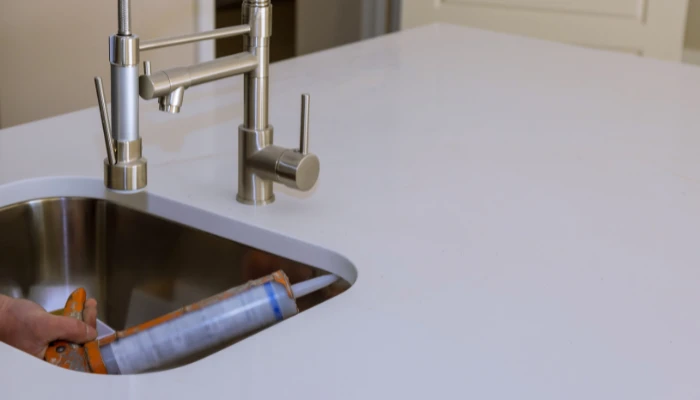
Hiring a Professional Installer:
When it comes to ensuring secure attachment, one of the best steps you can take is to hire a professional installer. Experienced installers have the expertise and knowledge to assess the best methods for mounting objects securely. They can also ensure that the attachment is done properly, minimising the risk of accidents or damage.
Choosing the Right Adhesive and Fasteners:
Selecting the appropriate adhesive and fasteners is crucial for achieving a secure attachment. Depending on the surface and the weight of the object being mounted, different adhesives and fasteners may be required. It’s important to consider factors such as the material of the surface (e.g., drywall, concrete, wood) and the weight of the object. Additionally, make sure to follow the manufacturer’s recommendations for the adhesive or fasteners to ensure optimal performance.
Regular Maintenance and Inspection:
Even with a professional installation and the right materials, it’s essential to conduct regular maintenance and inspection of the attachment. Over time, factors such as temperature changes, vibrations, and general wear and tear can weaken the attachment. Care for Granite Countertops Regularly inspecting the attachment and performing any necessary maintenance, such as tightening screws or reapplying adhesive, can help prevent accidents and ensure long-term security.
Conclusion
Granite countertops are typically attached to cabinets or support structures using a combination of adhesive and mechanical fasteners. The process involves applying a strong adhesive to the top of the cabinets or support structure, then carefully lowering the granite slab onto the adhesive. Once in place, mechanical fasteners such as brackets or clips may be used to further secure the countertop to the cabinets or support structure. This combination of adhesive and mechanical fasteners ensures a secure and stable attachment for the granite countertop. Feel free to contact us for any type of service or queries like How are Granite Countertops Attached.
FAQs
How Are Granite Countertops Attached To Cabinets?
Granite countertops are typically attached to cabinets using a combination of adhesive and mechanical fasteners. The adhesive creates a strong bond between the granite and the cabinet surface, while the fasteners, such as screws or brackets, provide additional support and stability.
What Type Of Adhesive Is Used To Attach Granite Countertops?
High-quality epoxy adhesives are commonly used to attach granite countertops to cabinets. These adhesives are specially formulated to provide a strong and durable bond that can withstand the weight and stress placed on the countertop.
Do Granite Countertops Need Additional Support Besides Adhesive?
Yes, in addition to adhesive, granite countertops often require additional support to ensure stability and prevent sagging. This support is typically provided by installing support brackets or braces underneath the countertop, especially in areas where there are overhangs.
Can Granite Countertops Be Attached To Existing Cabinets?
Yes, granite countertops can be attached to existing cabinets as long as the cabinets are structurally sound and capable of supporting the weight of the granite. In some cases, additional reinforcement or modifications to the cabinets may be necessary to ensure proper support.
How Are Seams In Granite Countertops Attached?
Seams in granite countertops are typically attached using a combination of epoxy adhesive and mechanical fasteners. The adhesive helps to bond the two pieces of granite together seamlessly, while the fasteners provide additional reinforcement and support along the seam.
Our Services
Our Recent Post
Top 7 Popular Quartz Countertops Colors in 2024
Top 7 Popular Quartz Countertops Colors in 2024 Quartz countertops...
Read MoreHow to Clean a Granite Composite Sink | Simple Steps for a Spotless Finish
How to Clean a Granite Composite Sink | Simple Steps...
Read MoreOur Services
Our Recent Post
How to Clean Concrete Floor | A Step-by-Step Guide for Sparkling Results
How to Clean Concrete Floor | A Step-by-Step Guide for...
Read MoreTop 7 Popular Quartz Countertops Colors in 2024
Top 7 Popular Quartz Countertops Colors in 2024 Quartz countertops...
Read MoreHow to Clean a Granite Composite Sink | Simple Steps for a Spotless Finish
How to Clean a Granite Composite Sink | Simple Steps...
Read More
